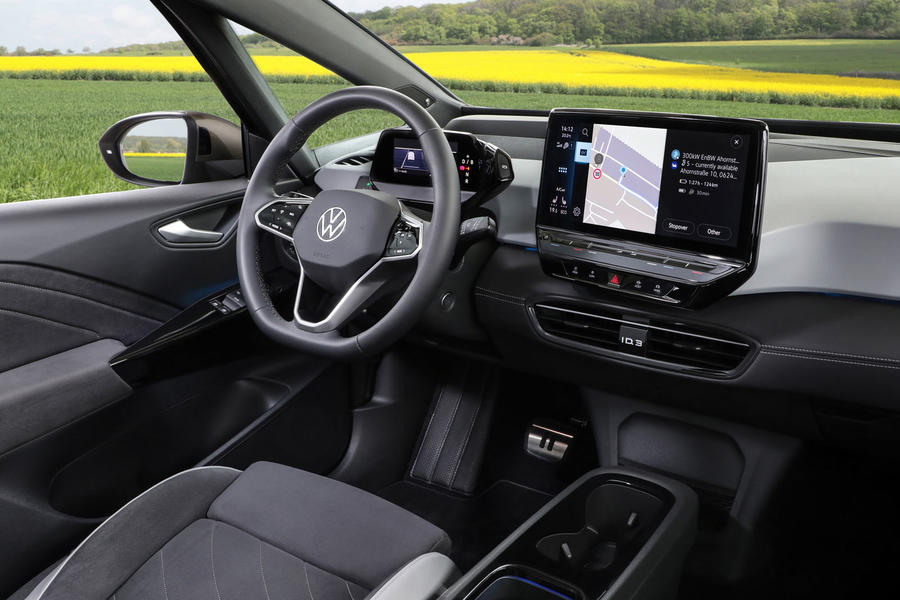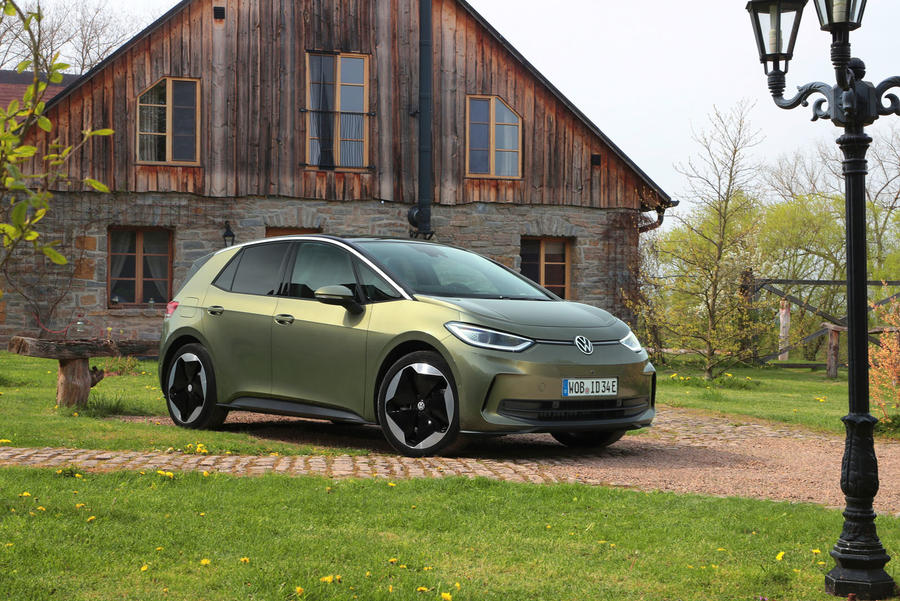The mainstay of Volkswagen’s electric line-up gets a targeted mid-life facelift
The ID 3 hasn’t had the most auspicious start in life. Volkswagen’s first dedicated electric model was delayed at launch due to problems with its software and lack of over-the-air (OTA) update capability, it has been roundly criticised for its lacklustre interior quality and charging niggles, and it has come under fire from a number of cheaper but better-equipped rivals.
But now, three-and-a-half years after its introduction, the rear-wheel-drive MPV-style hatchback has received a new lease of life with a mid-term facelift that aims to rectify its early weaknesses and further drive sales.
Among the changes is a light reworking of the exterior. It arguably gives the ID 3 a more cohesive appearance without many of the black plastic elements of the original model.
![]()
It’s inside, though, where the model gains even more important updates. They include a new-look dashboard with a synthetic leather covering on the Pro S model, driven here, as well as higher-grade plastics and upholstery in other places.
There’s now a standard 12.0in infotainment display in place of the previous 10.0in unit. It receives the latest software package and with it a new digital menu structure, higher resolution, faster response and more seamless operation. However, to our dismay, Volkswagen hasn’t added illumination to the sliders used to control the volume and climate.
result is a more pleasing driving environment with higher perceived quality and, despite apparent similarities with the earlier ID 3, more intuitive and easier-to-command controls than before.
The front seats are rather flat and lack side support. However, the high seating position makes for excellent vision. A flat floor also provides above-class-average accommodation, most notably rear seat leg room. Boot capacity remains at a Golf-beating 385 litres, although the ID 3 has a much high loading lip and floor than its combustion-engined stablemate.

Power comes from the same rear-mounted electric motor as before. It continues to develop 204bhp and 228lb ft in both the ID 3 Pro and Pro S, which receive 58.0kWh and 77.0kWh lithium ion batteries respectively.
Step-off response is urgent, making the ID 3 feel agreeably nippy around town, where the facelifted Volkswagen model feels most at home.
Open-road performance is also satisfying thanks to the flexible nature of the drivetrain and impressive refinement. The drivetrain is hushed, there are relatively low levels of tyre roar and wind noise at higher speeds is only moderate.
The facelifted ID 3 Pro S steers with lightness but precision, although there is little in the way of actual feedback. A well-damped chassis provides it with impressive body control over more challenging roads. There’s also a good deal of front-end grip, which enables predictable and dependable handling. In the end, though, its cornering ability is limited by its 1933kg kerb weight.
There’s a firmness to the ride, which can make the ID 3 feel somewhat unsettled over high-frequency bumps at lower speeds. However, its ability to cope with potholes and the like improves with speed – to the point where the new 2024 model feels well controlled and quite mature, with excellent isolation of road shock out on the open road by class standards.
You can alter the amount of energy recuperation and braking effect by calling up the battery mode via the gear selector mounted on the end of the 5.3in instrument display. A combined WLTP cycle range of 347 miles gives the Pro S more than token long-distance potential. By comparison, the MG 4 Long Range offers a WLTP range of 281 miles from its 61.7kWh battery.
An increase in the DC charging rate, from 125kW to 170kW, also reduces the ID 3 Pro S’s battery recharging time on a high-powered charger.
Until now, the ID 3 has been somewhat of a work in progress. But with the introduction of the facelifted model, Volkswagen finally appears to have delivered the electric-powered alternative to the Golf that it promised all along. The improvements over the original ID 3 are subtle, but they do help to lift its appeal in key areas. At £42,870 in Pro S guise, though, it remains a rather expensive proposition next to many of its more comprehensively equipped electric car rivals.

Source: Autocar